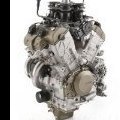STS Thread
-
Similar Content
-
- 7 replies
- 1,892 views
-
- 14 replies
- 1,859 views
-
- 7,207 replies
- 324,439 views
-
Funny picture thread. 1 2 3 4 1467
By cbrjess0815,
- 36,650 replies
- 1,705,025 views
-
- 282 replies
- 29,002 views
-






Recommended Posts
Join the conversation
You can post now and register later. If you have an account, sign in now to post with your account.